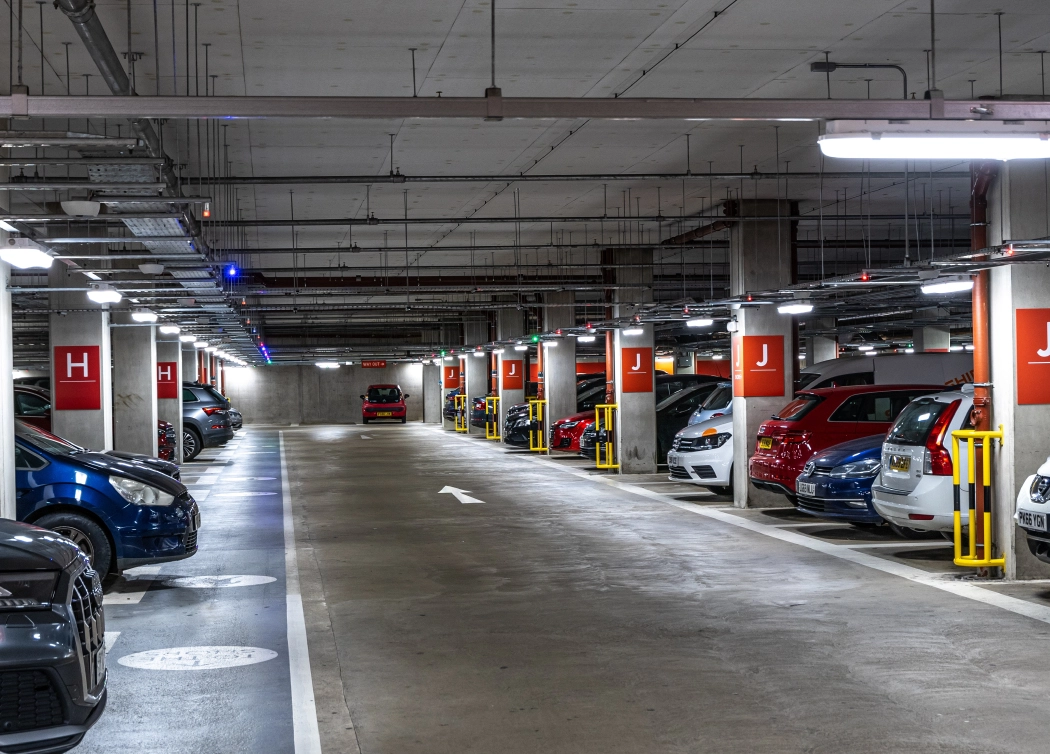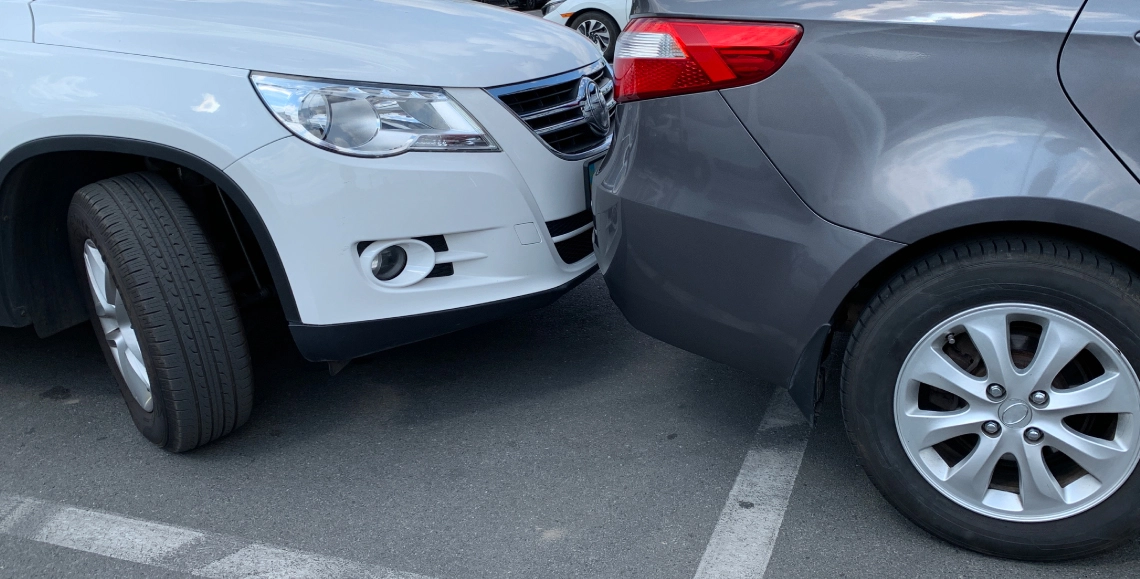How to prove a car accident wasn’t your fault
Car park accidents who’s at fault UK
To answer the question Car park accidents who’s at fault UK, you must understand the factors that caused the accident and what evidence to collect.

Once everyone involved is safe and emergency services have been called to help with injuries and road clearance, ensure to thoroughly examine the scene to determine who’s at fault:
Consider the factors that caused the accident:
- Dangerous driving
- Distracted driving
- Driving under the influence
- Weather and road conditions
- Vehicle malfunctions
Evidence to consider includes:
- Driver’s Details & Information
- All Passenger Details
- Both Vehicle’s Information
- Photo’s & Video Evidence
- Road & Weather Conditions
- The Date & Time
- Any Injuries that occurred
- Any Witnesses Details
- How The Collision Happened
Useful Tip:
Use a mixture of drawn diagrams, photographs and videos to collect evidence of the accident.
Below is an extensive guide on car park accidents and how to prove a car accident wasn’t your fault.
What is a Car Park Accident?
A car park accident is when two or more cars collide in a car park.
Some examples of accidents that occur in a car park are:
To determine who is at fault for a car park accident, it’s important to fully understand the accident circumstances.


Understanding car park accident circumstances
This might include:
- Parked in a car park bay
- Waiting for a bay to open up
- Waiting for vehicles in front to park, pull out or move on
If a car was stationary in a car park accident, a general rule of thumb would be that the other car is at fault. The other driver may bump, scrape or hit the stationary car while trying to park up or overtake.
This can happen because the driver may not be paying attention when they are parking up, or it can also happen if there is limited visibility due to other parked cars.
When pulling out of a parking bay, the accident would usually be a side-impact collision. To determine fault when pulling out, however, the circumstances do matter, for example:
- Was the passing driver speeding?
- Did the passing driver indicate for the parked car to pull out?
- Or did the car pull out of the bay without seeing the on-coming vehicle?
Typically, if the passing car was abiding by the road rules and didn’t cause a purposeful crash (Cash for crash scams), then a general rule of thumb would be that the car pulling out would be at fault for the accident.
This type of accident often occurs because the driver does not check for oncoming traffic before pulling out, or because they misjudge the speed of oncoming traffic.
In the UK, the law states that the driver of the moving vehicle, who hits the parked car, is responsible for the accident that occurs. In other words, if your car is parked legally in a car park space and another driver hits your car, they will be held liable for the damages.
It’s not uncommon for cars to experience a lot of stopping and starting when navigating through a car park, especially if the car park is a large multi-story car park for example.
A car may suddenly stop in a car park for multiple reasons:
- A car may have pulled out in front of their own car
- There might be an unexpected grid-lock in the car park
- The driver may have even seen an empty space that they wanted to use and stopped suddenly as a result
There are important factors which must be evidenced and considered in order to understand car park accidents and who’s at fault UK:
- Did the following car adhere to stopping distance guidelines or were they tailgating?
- Was the car behind speeding?
- Did the car behind not notice that the car in front had stopped due to distractions or lack of attention?
- Did the car in front suddenly stop intentionally or unnecessarily?
In a typical rear-ended accident, providing that the car in front did not intentionally or unnecessarily stop, it is the responsibility of the driver behind to adhere to stopping distances and pay attention. As a result, the rule of thumb is that the car behind, who rear-ended the car in front, would be at fault in the scenario.
The circumstances do matter when it comes to car park accidents and who’s at fault UK, though, and you must collect as much evidence as possible once the accident occurs.



If the accident wasn’t your fault, you are eligible to start a non-fault claim.
Have you been involved in a car park accident and you’re not sure who is at fault?
We have an experienced, non-fault expert team who can advise on your accident fault determination based on the circumstances.
Providing that the accident wasn’t your fault and you have collected all of the details we require, at no cost to you we can:
- Take all of the accident details and open a non-fault accident claim for you
- Recover your vehicle if it is un-roadworthy
- Help with a same day comparable replacement vehicle
- Process and manage your claim against the at-fault driver’s insurance company
- Organise accident repairs to your vehicle
- Assist with any personal injury claims through our panel of solicitors
As we will process the claim directly through the other driver’s insurance company, and not through your own insurance policy, we will help you to:
- Avoid paying your excess fee
- Avoid increasing your next insurance premium
- Avoid losing your no-claims bonus


Trustpilot
"From the first day I had contact with ACA, my claim was dealt with so efficiently and stress free. They had arranged for me to have a courtesy car which happened to be delivered by that very afternoon. A special thank you to Ron Parker who dealt with my claim and gave fantastic service through out. I was kept well informed every step of the way. I can highly recommend them and very grateful for them helping me. First class service, thank you!"
Some common causes of car park accidents?
Vehicles in car parks can be involved in a number of accidents, from scrapes and dents to more serious collisions.
There are a number of factors which can contribute to accidents in a car park, often associated with the driver’s abilities, conditions or driving behaviours.
We’ve broken down these behaviours & factors that contribute to car park accidents:
Reckless driving is a term used to describe a range of dangerous or negligent behaviours behind the wheel.
It can encompass:
- Speeding
- Tailgating
- Weaving
- Running stop signs
- and more
Reckless driving is one of the leading causes of accidents and fatalities on our roads and car parks. It is taken very seriously by the law.
If someone is driving recklessly through or within a car park, they are more likely to cause an accident.
Reckless driving is not always easy to define. Generally speaking, it is considered a traffic violation if the driver’s actions create “a substantial and unjustifiable risk of harm to persons or property”.
There are many reasons why someone might drive recklessly through a car park. They may be trying to:
- Save time
- They may be impatient
- Or that person may just be a reckless driver in general
If someone has collided with your car in a car park from driving recklessly, it’s likely that you will be able to make a non-fault claim against them to cover the damages and losses.
Call our Non-fault New Accident Claims team now on 0330 128 1407 or click here to begin a non-fault accident claim.
Distracted driving is any activity that takes a driver’s attention away from the task of driving.
Distracted driving is dangerous because it reduces a driver’s reaction time and ability to focus on their surroundings. Distracted driving causes thousands of car accidents each year and results in hundreds of needless deaths.
Distracted driving is a serious problem that has only grown more prevalent over time with the increasing number of high-tech distractions available to us.
There are a number of reasons why someone might drive distracted through a car park.
Many people believe that they can multitask and safely handle several tasks at once. However, this is not the case when it comes to driving, especially in a car park. Even if you are only taking your eyes off the route for a few seconds to check your phone or take a drink, this is enough time for a serious accident to occur.
In the UK, our laws restrict the use of mobile phones while driving, but even these measures are not enough to prevent all distracted driving accidents.
Many people engage in other activities while driving that can be distracting, such as eating or putting on makeup. These types of distractions can also significantly reduce your reaction time and ability to focus on the road.
Some drivers may drive distracted in a car park because they feel rushed or pressured to get somewhere quickly.
However, it is important to remember that safety should always come first when behind the wheel.
All of these types of distractions are likely common issues when driving through a car park:
- People might be running late and are setting off quickly
- To speed things up, they may continue their daily routine in the car while exiting a car park
- They may be bored or impatient and decide to use their mobile phone in a car park
The pace of a car park is much slower than our standard roads, therefore people may believe that allowing that distraction is more acceptable as a result.
The reality couldn’t be further from the truth: Car parks can be busy, small, versatile places that need careful navigation and full alertness to the ever-changing route ahead.
Some tips for avoiding distractions while driving include:
- Turning off mobile phones
- Seeking out quiet car parks that are not as busy or crowded
- Take regular breaks to give yourself time to regroup and refocus on the task at hand
Giving the right of way on the road means yielding to someone else who is legally allowed to go first at an intersection or in any other type of situation on the road.
When people are driving, they should always be aware of their surroundings and follow the laws and rules that keep everyone safe on the road.
It’s a critical and dangerous infraction to fail to yield when driving within any car park.
Any drivers and pedestrians with the right of way should be allowed to go ahead before a vehicle’s progression continues that doesn’t have the right of way. Ultimately, giving the right of way on the road is all about being responsible, courteous, and aware of what is happening.
There are a few possible reasons why someone might not give the right of way in a car park.
- Maybe they’re in a hurry and don’t want to wait for the other person to move
- Or they could be trying to get ahead in the parking lot by cutting in front of others
Whatever the reason, it’s important to remember that all car parks operate under the same set of rules, and it’s important that drivers receive their right of way.
Some car parks may also have designated lanes that drivers should follow when entering or exiting.
When using a multilane car park, it’s especially important that drivers respect these lanes and follow them closely. This not only helps to keep the traffic flowing smoothly but also helps to prevent accidents.
The right of way incidents are very common in car parks, especially when distraction or reckless driving is also a factor. It’s always best for drivers to proceed on the side of caution, giving way to the other driver.
Parking illegally in a car park generally means parking without a permit or parking in a space that is not designated for parking.
On a standard day, this might result in a parking fine or the driver’s car being towed, but sometimes it might cause a car accident.
Most people wouldn’t think of parking illegally as a serious issue, but it can lead to some dangerous accidents.
When drivers park in unauthorised areas, this often creates issues for other car park users.
Car parks often have narrow lanes and tight turns.
It doesn’t take much for an illegally parked vehicle to intercept the, what should be, correct flow of traffic.
Understanding fault when a collision occurs with an illegally parked car can be complex. The determination will be made from a detailed assessment of how the collision occurred.
If you have had a collision with an illegally parked car, ensure to collect as much detail as possible and be sure to draw a diagram of how the illegally parked car was the cause of the accident.



If the accident wasn’t your fault, you are eligible to start a non-fault claim.
The conditions of the car park
If the car park has poor lighting, poorly maintained surfaces and cars parked too close to each other, this can lead to accidents of vehicles.
Car accidents in car parks are most often caused by human error, but the car park itself might have contributing factors to the accident.
If the car park is poorly lit and this led to your accident, then the car park could be held liable. This is because the car park owner has a responsibility to maintain safe and well-lit conditions for people visiting the premises.
Another factor that can contribute to accidents in car parks is poorly maintained surfaces. If a car park has:
- Dangerous potholes
- Uneven surfaces
- Cracks in the pavement
- Blind spots
- Poorly highlighted right of way
Then these conditions can lead to accidents.
Call us 0330 128 1407 | Start your claim now >
Trustpilot
"Auto Claims Assist Ltd are absolutely brilliant. All staff are so friendly and kind. They make sure that you have no stress during the claims process and advise/assist you every step of the way. I’m amazed with how efficiently everything was handled and how fast the progress was of my claim. I was kept up to date at all times. I would absolutely recommend using this company and would definitely use them again if I ever need to in the future."
Establishing fault in a car park accident
There can be a lot of confusion when it comes to who is at fault in a car park accident. As you can see above, there are many factors to take into consideration.
The first step is to collect evidence at the scene of the accident and undertake clear, calm communication with the other driver.



If the accident wasn’t your fault, you are eligible to start a non-fault claim.
Collecting evidence if you are in a car park accident
If you are involved in a car park accident and it wasn’t your fault, evidence is of vital importance to help determine who was at fault.
Following the accident it’s important you take notes about how the accident occurred including:
- The date and time
- The location and circumstance
- The weather conditions i.e wet or icy roads
- A description and diagram of how and where the vehicles collided
- A description of any injuries you or your passengers sustained
Collect any witness names and contact details. Your witness statement should cover the following questions:
- What did you see happen?
- Did you see who caused the accident?
- What time did the accident occur?
Witness statements can be key to clarifying what happened and how it happened during your claim.
To give yourself the best chance at proving the accident wasn’t your fault, media such as photographs and videos help to show:
- The damage to your car
- Where the cars impacted
- The surroundings and circumstances that lead to your accident
- If you have a dashcam, save any footage that relates to your accident
Additionally, if you can gain access to CCTV footage from the car park, this can be a valuable resource to help piece together what happened.
Trustpilot
"Absolutely brilliant company to deal with. Helpful & efficient. Dealt with everything after giving initial details of incident. Christina my claim handler was very helpful throughout. Excellent customer service. Would definitely recommend."
After the accident and processing a non-fault claim
Not everyone knows exactly what to do after a car accident, especially if the accident wasn’t your fault.
The most important thing is to ensure everyone is safe. If there are any injuries, call the emergency services for help first before worrying about anything else.
It is imperative that you do not apologise or admit fault, no matter the circumstances. Admitting fault can seriously impact your claim for damages later on.
Once the situation is safe and calm, focus on collecting the details and evidence about the accident. This is important for processing a non-fault claim.



If the accident wasn’t your fault, you are eligible to start a non-fault claim.
Related articles
Visit Resource CentreDo I have to pay excess if the accident wasn't my fault
Do I lose my no claims if the accident wasn't my fault
Will A Non Fault Accident Affect My Insurance
Accident Management VS Your Insurance Company


Request
a callback
Our team of non-fault claim specialists are ready to answer any questions you have. Provide your details here to request a callback. One of our advisors will call you back as soon as possible. Alternatively, call us on 0330 128 1407 to speak to someone now.
One of our team will give you a call